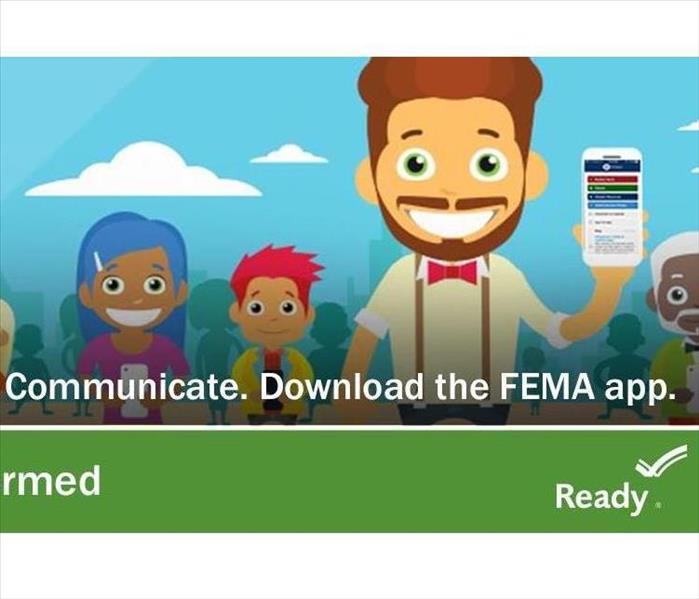National Preparedness Month:Emergency Alerts
9/6/2018 (Permalink)
Public safety officials use timely and reliable systems to alert you and your family in the event of natural or man-made disasters.
Wireless Emergency Alerts
During an emergency, alert and warning officials need to provide the public with life-saving information quickly. Wireless Emergency Alerts (WEAs), made available through the Integrated Public Alert and Warning System (IPAWS) infrastructure, are just one of the ways public safety officials can quickly and effectively alert and warn the public about serious emergencies.
What you need to know about WEAs:
- WEAs can be sent by state and local public safety officials, the National Weather Service, the National Center for Missing and Exploited Children, and the President of the United States
- WEAs can be issued for three alert categories – imminent threat, AMBER, and presidential
- WEAs look like text messages, but are designed to get your attention and alert you with a unique sound and vibration, both repeated twice
- WEAs are no more than 90 characters, and will include the type and time of the alert, any action you should take, as well as the agency issuing the alert
- WEAs are not affected by network congestion and will not disrupt texts, calls, or data sessions that are in progress
- Mobile users are not charged for receiving WEAs and there is no need to subscribe
- To ensure your device is WEA-capable, check with your service provider
Visit the FEMA Media Library and download these tools:
- Visit the FEMA Library to download Wireless Emergency Alerts PSA (:30)
View "Wireless Emergency Alerts PSA (:30)" on Youtube. - For Kids: Wireless Emergency Alerts (WEA) and Word Search Puzzle
- For Educators: Wireless Emergency Alerts Instructional Materials
- Online Training Courses
Emergency Alert System
- The Integrated Public Alert and Warning System (IPAWS), is a modernization and integration of the nation's existing and future alert and warning systems, technologies, and infrastructure.
- The Emergency Alert System (EAS) is a national public warning system that requires broadcasters, satellite digital audio service and direct broadcast satellite providers, cable television systems, and wireless cable systems to provide the President with a communications capability to address the American people within 10 minutes during a national emergency.
- EAS may also be used by state and local authorities, in cooperation with the broadcast community, to deliver important emergency information, such as weather information, imminent threats, AMBER alerts, and local incident information targeted to specific areas.
- The President has sole responsibility for determining when the national-level EAS will be activated. FEMA is responsible for national-level EAS tests and exercises.
- EAS is also used when all other means of alerting the public are unavailable, providing an added layer of resiliency to the suite of available emergency communication tools.
Emergency Alert System fact sheet
NOAA Weather Radio
NOAA Weather Radio All Hazards (NWR) is a nationwide network of radio stations broadcasting continuous weather information from the nearest National Weather Service office.
- NWR broadcasts official warnings, watches, forecasts and other hazard information 24 hours a day, 7 days a week.
- It also broadcasts alerts of non-weather emergencies such as national security, natural, environmental, and public safety through the Emergency Alert System.
Source: Ready.gov






 24/7 Emergency Service
24/7 Emergency Service
